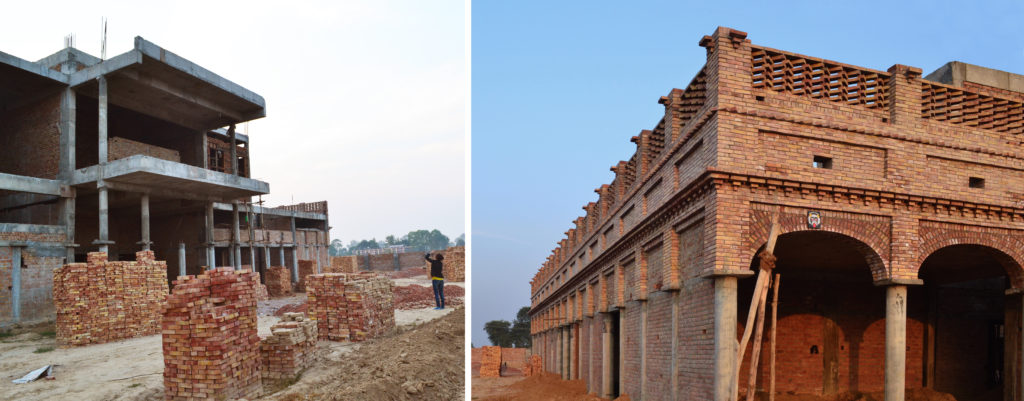Innovate for Climate Change – How the 2020 disruption can kick start the shift to a Cleaner Future
By Adreesh Chakraborty
Founder, Director of The Earth Home
Author of – The Adventures Of Inchy Slim
Action on Climate Change hasn’t ever been quick. The idea of a possible cataclysmic event out there in the future makes it difficult for the world to come to terms with the changes they must make to transform trillions of dollars’ worth of infrastructure within a very short span of time.
While in the midst of the global coronavirus crisis, it is heartening to see how people and governments across the world are willing to come together when faced with an imminent threat. With the economic engines groaning and sputtering as the world tries to stop the threat of an invisible enemy, pollution levels have plummeted to surprising levels and the skies and water channels have cleared up even in the most polluted cities of the world. As we share stories online of the return of wildlife to the most unimaginable urban areas we are immediately confronted with two opposing wishes – for the economic activity to resume and expand as soon as possible; and for the earth to keep healing and renewing itself like we see is possible.

Is it possible to imagine a world where these wishes weren’t opposing? Can we use this window of worldwide quarantine and lockdowns as a possibility to create a different future – a thriving planet?
The Energy of Building
With buildings consuming almost 40% of energy produced and with no immediate switch to turn from fossil fuels to renewables or other reliable clean technologies, how we design, build, source and run our buildings all require to change drastically for any considerable effect to take place. It will require architects to relook at the way they design and spec., contractors to rethink the way they manage, construct and dispose and suppliers to reorganize their sources, packaging and transportation models.
While all this has been discussed endlessly among forums with various well-meaning green councils and accreditation methods already in place all over the world, what we have lost is time and the chance to take drastic action at a scale that could actually create any meaningful impact.
The way we produce almost all our energy is by making fire. This pre-historic tendency has served us very well until recently when we suddenly found ourselves increasing by the billions. With product-centric lives everything around is manufactured and a whole lot of them require energy to run themselves.
Almost 80% of the world’s energy is still being produced by fossil fuels. With the world’s energy demand set to increase by a whopping 50% from current levels by 2050, fossil fuels will still play a major role to cater to this energy demand. Though renewables are ramping up at a massive scale, when looked at in percentages, their contribution remains minimal with market challenges acting as regular deterrents in their scalability.
In the building industry energy is consumed broadly in three distinct ways:-
- Manufacturing of building material
- Transportation of materials and construction.
- Energizing Buildings throughout their lifespan.
Localisation – The window of possibility
Globalization in the modern context has not only brought the world closer, it has made international sourcing of goods and services cheaper and more viable. An outcome of this global supply chain is a true global marketplace; but this also comes with a considerably large carbon footprint both in terms of energy usage, for shipping and surface transportation, and emissions.
With supply chains blocked due to the staggered lockdowns all over the world and with uncertainties in otherwise resilient global systems which developed over decades, the industry must quickly adapt to sourcing locally. If not seen from a lens of a limitation but as a possibility to turn the tide on the climate crisis, this can potentially boost the manufacturing sectors, reinforce morale in the markets and not only sustain but increase employment and skill sets in each country. It might require ingenuity and innovation, right from governments, architects to manufacturers and contractors – but we already have car makers, vacuum cleaner producers and young start-ups among a host of other companies making ventilators; a process that usually takes a year, fast-tracked to weeks, even days. We can already see that when people work together, rather than against, they can surmount great obstacles with relative ease. Is now the time to be on the creative edge?
Manufacturing – Turning down the Fire
Manufacturing companies with existing product lines will have to use raw material if they are to continue in the post Covid – 19 environment. Locally sourced and reclaimed material can often come at different prices and with different properties, opening up challenges as well as newer possibilities. Re-imagining products with the machinery, materials and skills available by maximizing learning can create surprising results.
One of the key components of manufacturing is energy. Energy input costs are a major component of the overall cost of the product. There is a plethora of research available on the compositions and benefits of making products with low embodied energy. It not only reduces emissions but can significantly reduce the cost of manufacturing. Manufactures would require to cash in on this disruption to kick start their transition towards a net zero future.

This shift is not only imminent but will be mandated very soon by governments across the world. We can already see it in the auto-industry with emission norms getting more and more stringent every year. With a possibility of cities across the world shifting surface mobility from fossil fuels to electric, to bring down pollution within urban areas, the demand for electrical energy is going to shoot up exponentially. Renewables and clean sources will not be able to match up to the energy requirement as soon, given their current trend. This can create major disruptions in supply and shoot up energy costs.
Architecture and Design will require to lead the change. Demand for building materials are consistent with what designers specify. Informing clients and users on the benefits of using materials and products with low-embodied energy will be critical to the success of this shift.
Design – Shift of focus
What we can learn from evolution is that nature is constantly tweaking and optimizing based on the surrounding conditions. While we might not have enough time for natural evolution to help us out of the climate crisis, we can definitely shift our focus and optimize from a space of connection with the earth.
Architecture can significantly reduce the energy requirements in buildings by employing simple passive design techniques. Shading devices, insulated walls, natural ventilation and usage of thermal mass have been used traditionally for hundreds of years. Traditional building design evolved out of centuries of communion with the earth and nature.

With the technology available today architects can design, model and calculate exact energy requirements of buildings throughout the year at any given location. This is an extremely powerful tool to help design and modulate buildings employing passive design techniques. We have achieved energy demand reductions of upto 35% only with passive design in mixed climate zones. Adding mixed modes of natural ventilation, cooling and air-conditioning, we have achieved upto 70% reduction in overall energy demands throughout the year with negligible escalations to capital cost. Reduced energy demand translates to reduced running costs, which is an undeniable motivation for any end-user. Adding renewable generation in projects which has the area and the capacity available for such installations can further reduce the overall energy requirement from fossil fuels. Adaptive re-use and retro-fitting existing buildings to perform better can also open up new revenue streams.
— — — — — —
The effects of climate change will not be marked by a singular event. Some theorists have linked the Syrian civil war crisis to a climate change induced drought which triggered mass migration, while others have denied it citing lack of evidence to such a claim. While we might intellectualize away our time, climate change events are already occurring all around us. We can clearly see how chain reactions of a singular event can explode all around the globe, bringing the world to a standstill. We have also seen how resilient the earth is and the power of its own rejuvenation. Is now the time to take action?

